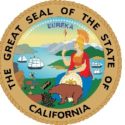The United States acquired California from Mexico in a treaty — the same process that brought Puerto Rico to the United States. California in 1848 had just over 7,000 residents and not much in the way of towns or resources. The settlers who had come from the United States into California weren’t cooperative with the local government, either. A group in the northern part had actually declared themselves a republic for about a month. Mexico must have felt that they could spare California. What they didn’t know was that just 9 days before the treaty was signed, gold was discovered at Sutter’s Mill.
Within a year, California had a population large enough to be a state. San Fransisco alone had grown from a population of 800 to 100,000 by the time California became a state.
There was a strong statehood movement, too. Like many of the 50 states before statehood, California was a wild and lawless place. The Gold Rush brought people from all over the world, and the system that had worked for a sprawling part of Mexico didn’t work for the miners and the boom towns. Different areas of the territory had different laws and governing systems, and there were conflicts among the regions. The territory was officially under military rule, but the U.S. governor couldn’t keep his troops from deserting to find gold.
Prices skyrocketed, murders were commonplace (Marysville had 17 murders in one week in 1849), and the infrastructure definitely didn’t keep up with the population growth. Californians knew that statehood would lead to peace and prosperity.
California never became an organized territory. Instead, they took up the Tennessee Plan and sent representatives to Washington in 1849 to get statehood quickly.
Statehood and slavery
Political differences divide the United States now, and they did so in the 1800s, too. When California started working toward statehood, the biggest issue was slavery. Some states allowed slavery and some did not. The U.S. Congress tried to avoid serious conflicts on the subject by keeping Congress evenly divided — having the same number of representatives for free states as for slave states. They figured that as long as they had equal numbers of slave and free states, the balance of power in the legislature would keep things running smoothly.
It didn’t work out that way over the long run, but when California asked for statehood, Congress was still trying this method. There was a suggestion that California could enter the Union as two states: one with slaves and one without. That idea was rejected, and several other statehood bills for California also failed. The debate was lively — at one point one Congressman drew a pistol on another — and no agreement could be reached.
But opinion across the country was in favor of bringing California into the Union. A New Orleans newspaper said that “in the present unsettled condition of the territory, these dissensions threaten to produce the most serious difficulties, and we are satisfied that the only way to restore harmony is to admit California to the Union without delay.” Slaves states like Louisiana wanted to bring California into the nation before the territory made a decision on slavery. Most of the residents in 1849 weren’t citizens of the United States and they hadn’t yet written a constitution. If they wouldn’t agree to divide into two states, they still might be willing to leave the slavery question open.
In the fall of 1849, however, California wrote a constitution, made slavery illegal in the California territory, and again applied for admission as a state. California came into the United States as part of the Compromise of 1850.
Statehood’s benefits
California continued to face challenges after they became a state, and the admission of California to the Union didn’t prevent the Civil War. But California’s quick transition to statehood shows that a possession of the United States, even one experiencing chaos, can become a state, even in the face of conflict and uncertainty. California quickly became and continues to be a prosperous and influential state. The Tennessee Plan worked for California, and it can work for Puerto Rico.
We can’t go back. Join us going forward.








No responses yet